
Sapphire Medallion | Illustration by Daniel Ljunggren
The easiest method of winning a game of Commander is ramping faster than your opponents. There’s a reason cEDH decks pack so much fast mana, and it’s not to show off.
While mana rocks, mana dorks, and land ramp are some of the most common forms of ramp you’ll play against, cost reducers are a class in and of themselves that deserve respect. Because they’re more restrictive than ramp that produces extra mana, they can be narrower than your average Rampant Growth but often offer much more value to decks willing to meet their restrictions.
Let’s explore the best cost reducers for EDH!
What Are Cost Reducers in MTG?

Ezzaroot Channeler | Illustration by Kieran Yanner
Cost reducers make spells cost less mana to cast. This doesn’t affect the spell’s mana value, just the amount of mana you pay. The most common reduction amount is , though some reduce costs by or more mana. Most cost reducers affect a subgroup of cards rather than every card type. They often distinguish cards by type or color; cards that reduce the cost of instants and sorceries are especially common.
Cost reducers are primarily used as ramp. Though more restrictive than ramp spells that put additional lands into play (Rampant Growth) or tap for mana (Birds of Paradise), they have unique benefits.
Let’s say you play Birds of Paradise on turn 3. You can play a 5-mana spell on turn 4 because the Birds will produce 1 extra mana. But if you had a Goblin Electromancer instead, on turn 4 you could play two instants or sorceries with mana value 3; in this scenario, the Electromancer effectively generated 2 mana. Cost reducers have a lower floor than other ramp sources because of their restrictions but a higher ceiling since they can enable explosive turns.
I’m primarily ranking these cards for Commander. Since these are mostly ramp spells, I want cheap, efficient plays; if they cost more than 2 or 3 mana, they better pack some extra value. How restrictive they are also matters; the more niche the card type that gets reduced, the narrower and less appealing the card. I’m also only considering cards that reduce the cost of other spells, not cards that reduce their own casting cost.
#40. Case of the Ransacked Lab
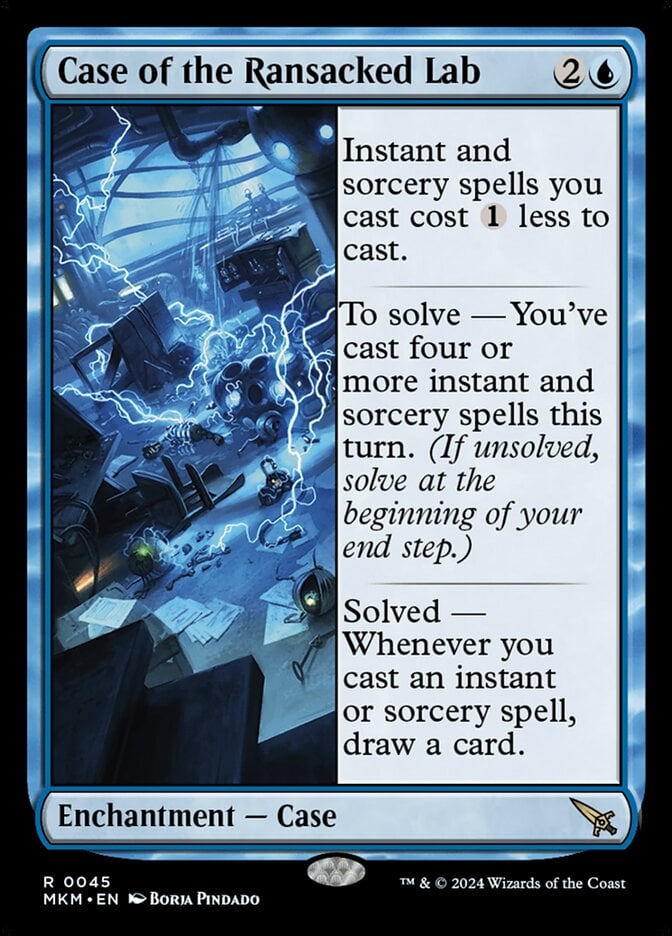
Case of the Ransacked Lab is almost there. The biggest issue comes from sequencing. You want this kind of card in a Storm deck, but you can’t solve it while going off. You need to cast a flurry of spells then wait for a turn cycle to pop off, giving your opponents time to prepare for your combo turn. Drawing cards is still incredible though, so I won’t write this case off.
#39. Undead Warchief
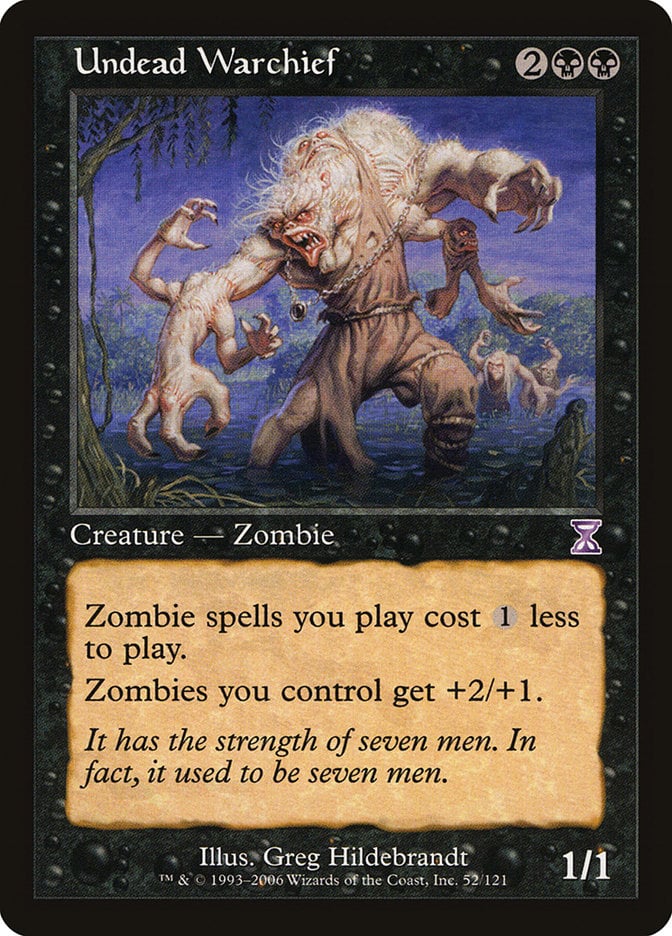
Magic has a full cycle of warchiefs and Undead Warchief is among the more promising. Zombies can often recast themselves from the graveyard, making the archetype fairly mana hungry. They can also make excellent use of the anthem since part of the archetype’s mechanical identity involves hordes of Zombie tokens.
#38. Ezzaroot Channeler
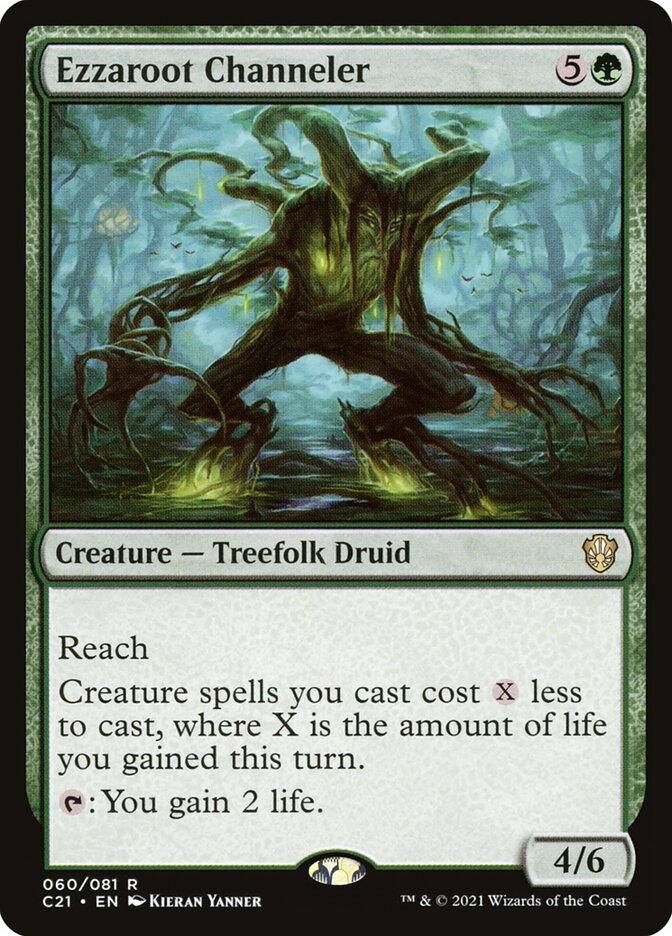
Ezzaroot Channeler could go nuts with some Eldrazi or artifact creatures. I’m keeping it low because I would never play this green creature on its own; it needs to be in a dedicated life gain deck. This card would be terrifying in the right shell.
#37. Primal Amulet
Spellslinger players are spoiled for choice when it comes to cost reducers, so the 4 mana for Primal Amulet seems like a big ask. Primal Wellspring offers plenty of value but technically worse ramp since it only produces 1 mana. That said, how much mana do you need when doubling up on Crackle with Power or Breach the Multiverse?
#36. Font of Magic

Font of Magic needs to be played alongside two commanders, be they partners or backgrounds. A single commander won’t provide the benefits you want from this blue enchantment. This card might be too slow as a 4-mana enchantment that needs additional mana investment in your commander(s) but I respect the high ceiling.
#35. Defiler of Instinct

Of all the Defilers, Defiler of Instinct hurts the most from the permanents-only restriction. This red Phyrexian still has its uses, though; this is good ramp plus a win condition for combos that repeatedly recast red creatures like Squee, the Immortal and Dockside Extortionist.
#34. Gargos, Vicious Watcher
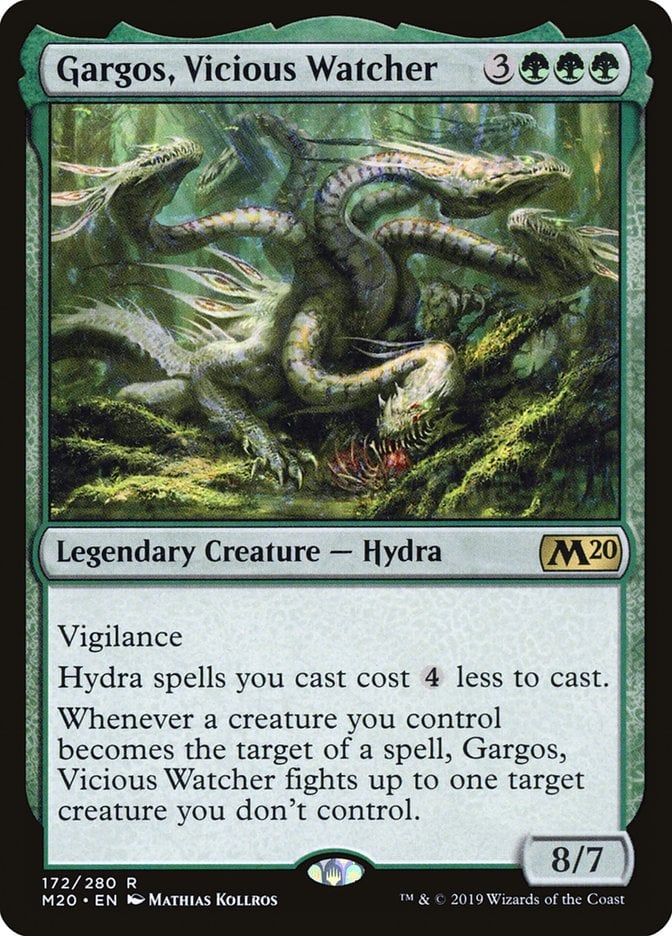
Getting a whopping 4-mana discount is huge, especially since hydras demand tons of mana pumped into their X-costs. Make no mistake, Gargos, Vicious Watcher isn’t lower because it’s bad, just because it’s extremely narrow. Gargos excels in the one archetype that wants it.
#33. Rakdos, Lord of Riots
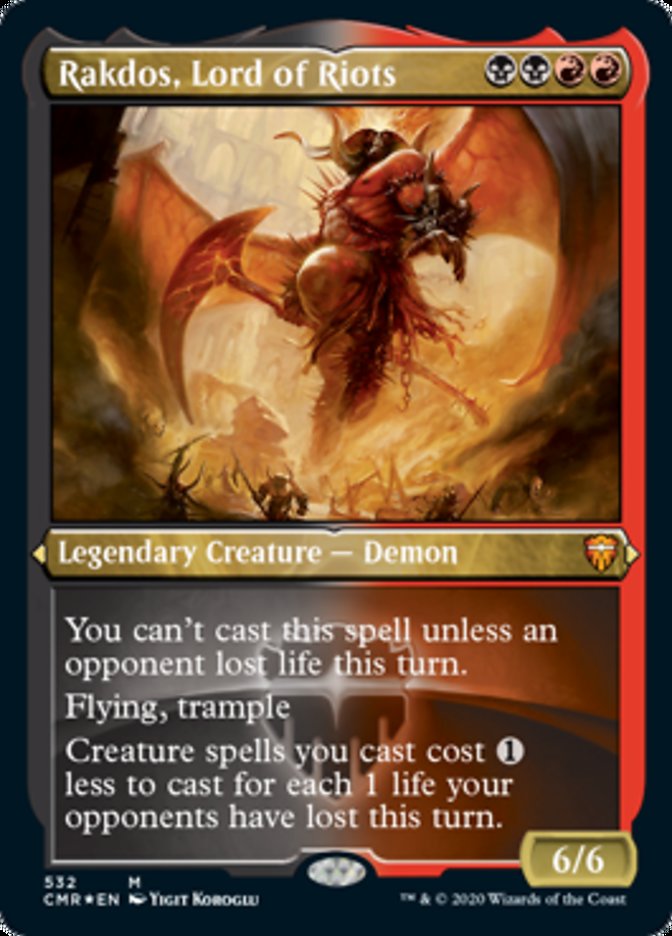
Getting Rakdos, Lord of Riots into play takes a smidgen of work but it comes with a handsome reward in cost reduction. You’ll want plenty of ways to ping your opponents, both to cast Rakdos and enable the second ability. Cards that repeatedly ping your opponents like Creeping Bloodsucker, Stormfist Crusader, and Descent into Avernus play well here.
#32. Mizzix of the Izmagnus
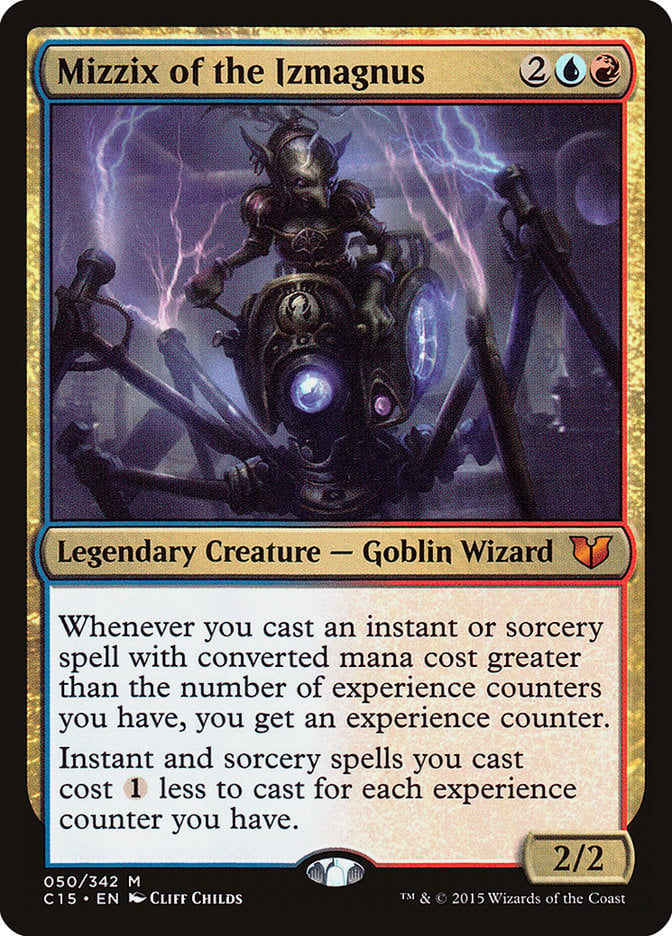
Once a fearsome spellslinger commander, Mizzix of the Izmagnus often feels too slow these days, but constructing a perfect curve to build up experience counters is still a rewarding brewing process.
#31. Oketra’s Monument
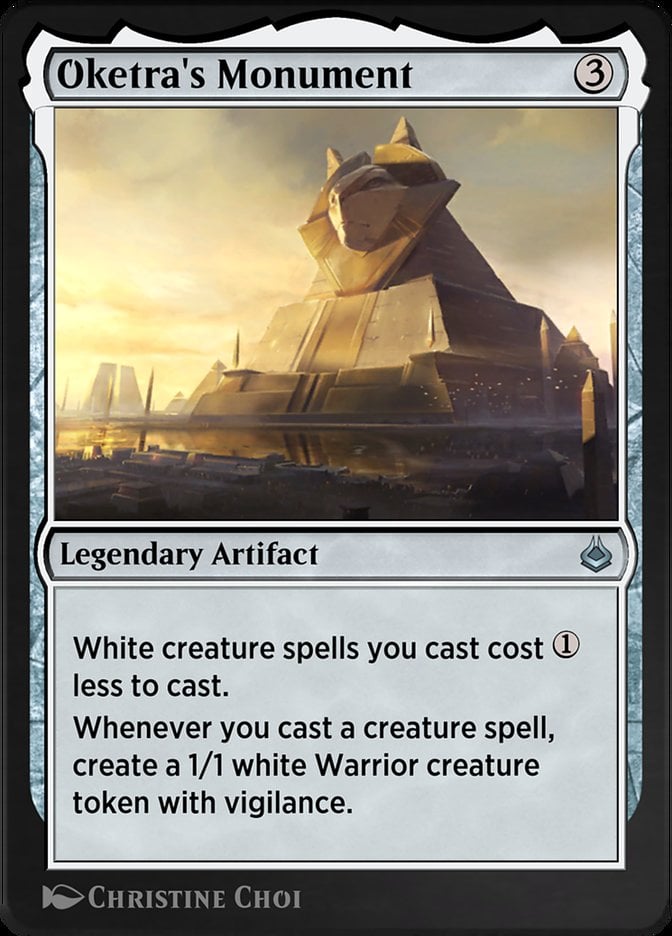
Oketra's Monument is the strongest of the monument cycle from Amonkhet. Getting an army of tokens in addition to ramp in a color famous for lacking in that department makes this legendary artifact a powerful inclusion to many white decks.
#30. Blood Funnel
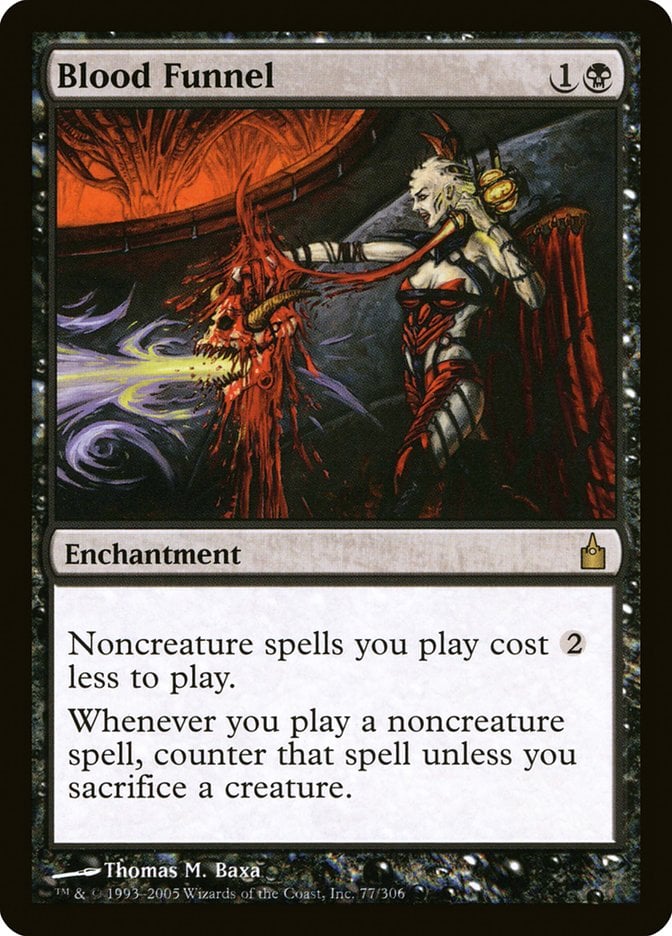
It takes some effort to make Blood Funnel a powerful card. One route would pair it with cards like Lier, Disciple of the Drowned and Chimil, the Inner Sun to prevent your spells from getting countered. You could also pair this black enchantment with cards like Young Pyromancer and Third Path Iconoclast that produce tokens when you cast spells; you can stack the triggers so you create the token, then sacrifice it. It’s a lot of work but 2 mana is a big discount.
#29. Heartless Summoning
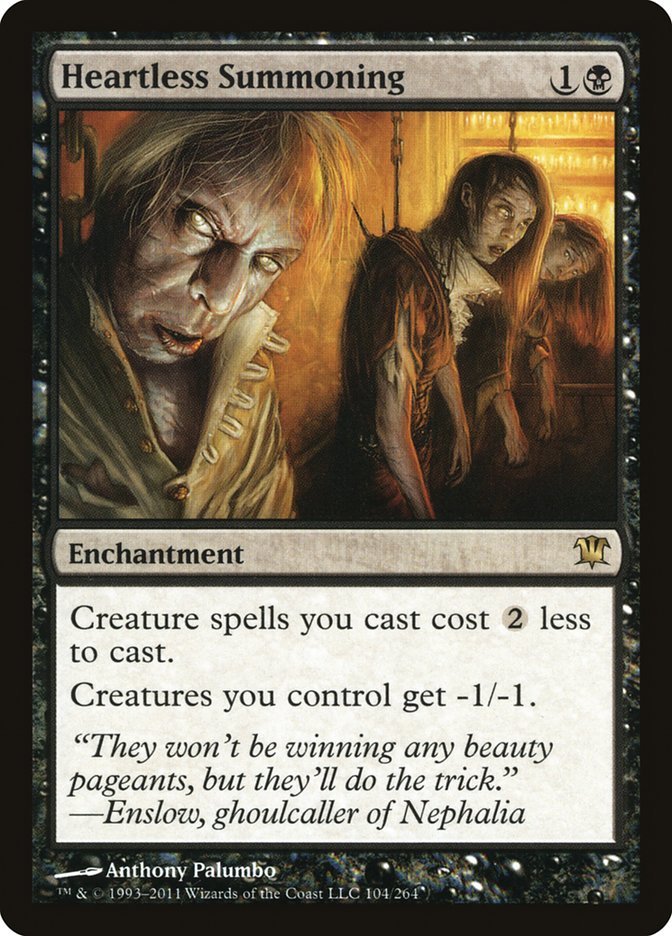
Pairing Heartless Summoning with oversized creatures like Elder Gargaroth and Myr Superion is the easiest way to break the card, but why not put the -1/-1 ability to work? Pair this with cards that produce 1/1s like Oketra's Monument and Defiler of Faith to rack up death triggers from Syr Konrad, the Grim and other Blood Artist effects that survive the debuff.
#28. Krosan Drover

Krosan Drover gives ramp to the big, expensive cards that need it most. Curving this green elf into any 6- or 7-drop a few turns early provides incredible pressure, especially if you start chaining giants. You need a suitable high curve to make this worthwhile.
#27. Dragonspeaker Shaman
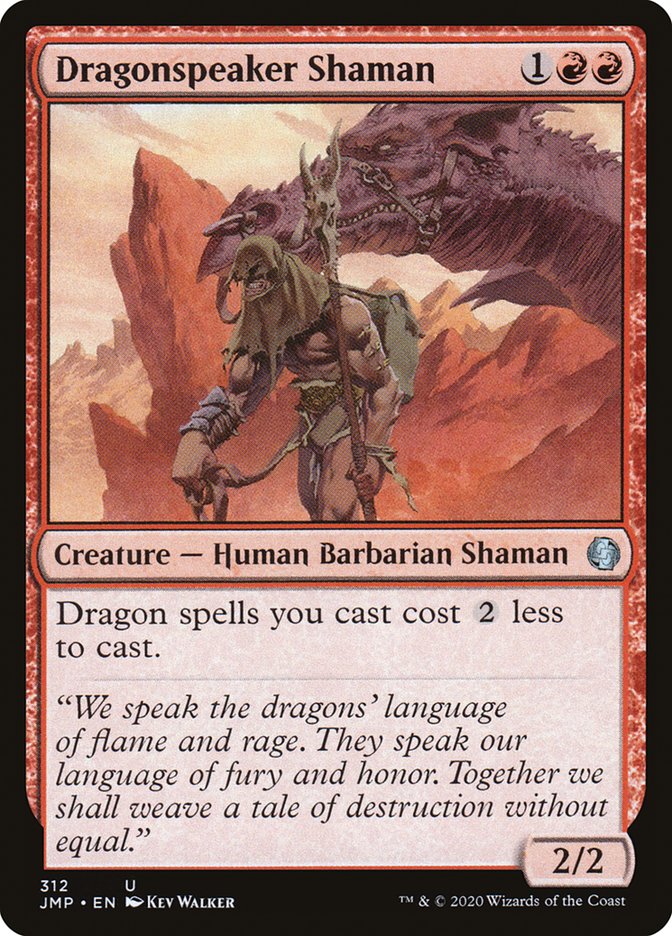
Dragons are big, powerful, and costly. Dragonspeaker Shaman helps get them out at a more reasonable rate so your opponents can’t overwhelm you. Its distant cousin Dragonlord's Servant isn’t as potent but generally goes in the same decks.
#26. Goblin Warchief

The greatest warchief, Goblin Warchief doesn’t give a stat buff but provides a hyper-aggressive archetype with haste, which might be more valuable. Pretty much any goblin typal deck prioritizes adding this with good reason.
#25. Cemetery Prowler
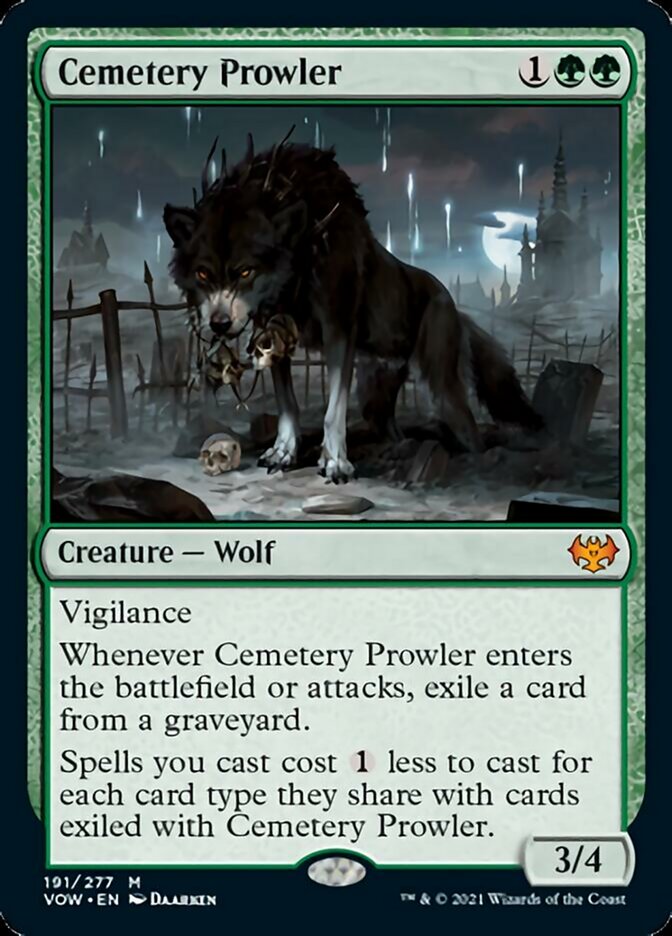
Graveyard hate and ramp in one package makes Cemetery Prowler an appealing wolf for creature-heavy decks. I might go so far as to call it underrated given that I’ve never seen it across the table.
#24. Defiler of Faith

Defiler of Faith might look like a more expensive Oketra's Monument but it’s superior for two reasons. Firstly, white cares enough about enchantments that reducing the costs on permanents instead of just creatures can pay dividends. Secondly, Soldier tokens have more support than Warrior tokens. I won’t pretend these are the greatest differences in the world, but they give this white creature an edge.
#23. Kethis, the Hidden Hand
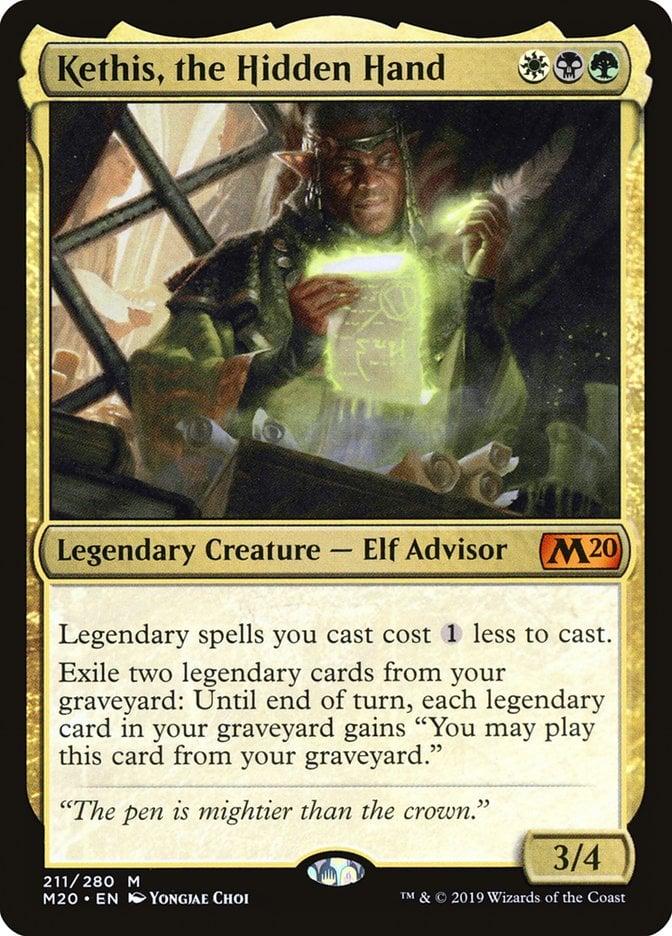
Kethis, the Hidden Hand pulls double duty as a cost reducer and card advantage engine to make use of the mana reduction. Only making legends cheap is a little restrictive, but it ages like wine given the emphasis on Commander and subsequent printing of legendary creatures.
#22. Hinata, Dawn-Crowned
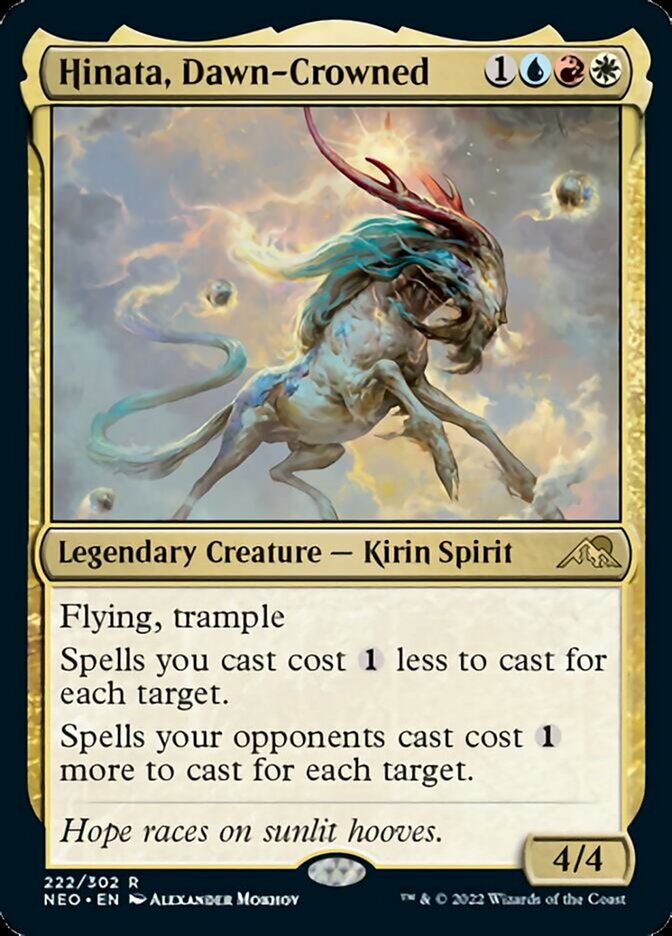
Hinata, Dawn-Crowned dominated Standard for a time alongside the multi-targeting Magma Opus. As for Commander, this Jeskai spirit does its best work alongside X-spells like By Force, Curse of the Swine, and Distorting Wake.
#21. Magnus the Red

Magnus the Red offers an easily achievable discount to your instants and sorceries. Its token production is welcome, but hardly necessary when we have access to token production from cards like Saheeli, Sublime Artificer, Third Path Iconoclast, and Talrand, Sky Summoner. I wouldn’t play this without a significant amount of token production but the right deck leverages this Izzet demon extremely well.
#20. Umori, the Collector
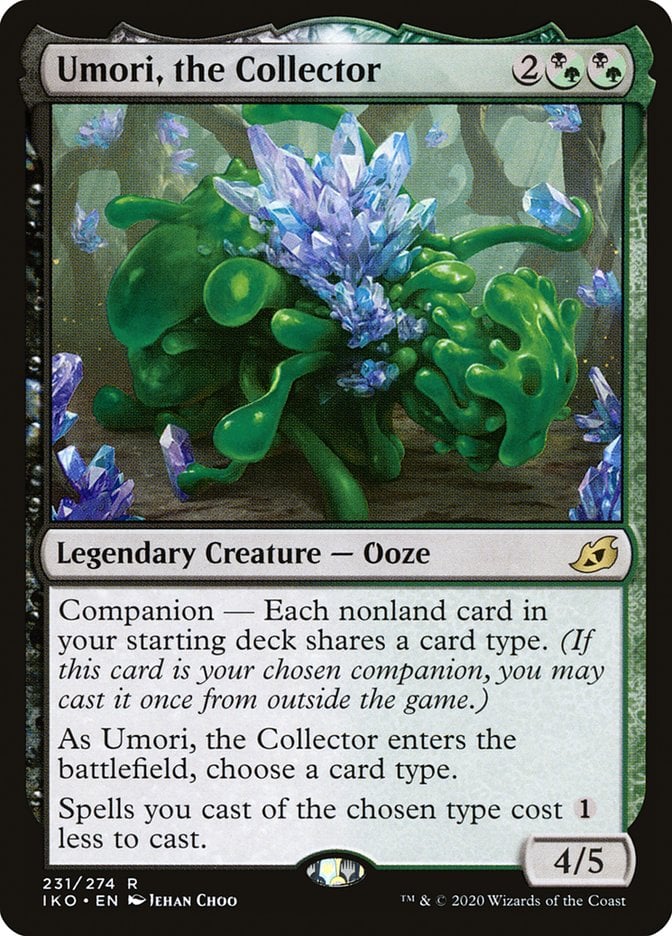
The companion mechanic is inherently broken. Your commander needs to be the same type declared with Umori, the Collector, so you’ll most often find it companioned alongside all-creature decks, though enchantment creature or artifact creature commanders open other possibilities.
#19. Hamza, Guardian of Arashin
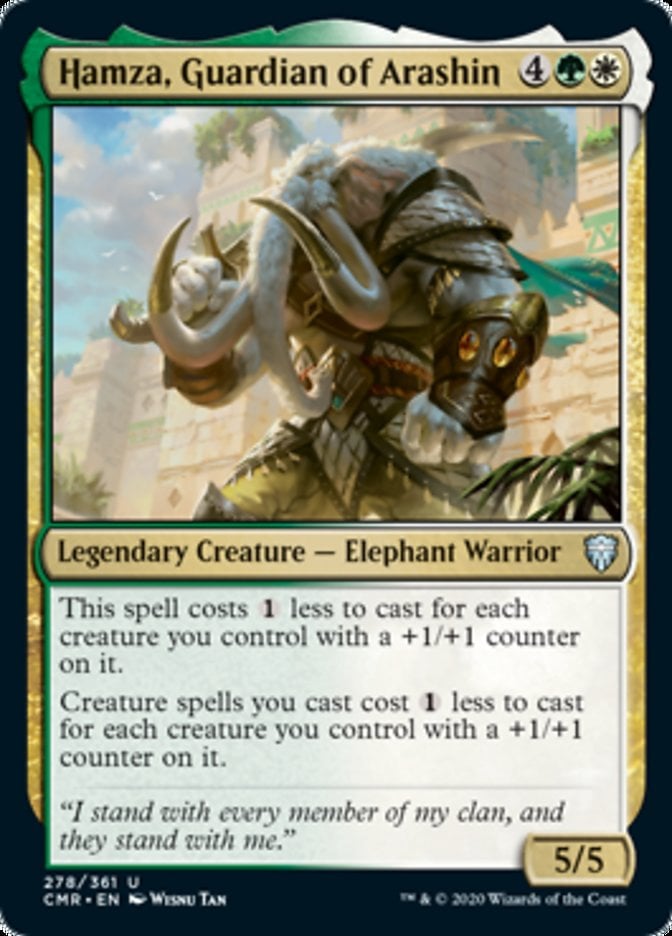
Hamza, Guardian of Arashin rewards decks for stacking +1/+1 counters across the board. The counters are a common enough payoff to avoid super-niche status. Hamza is a prime choice for the command zone since this Selesnya commander reduces its commander tax with its first ability.
#18. Defiler of Dreams
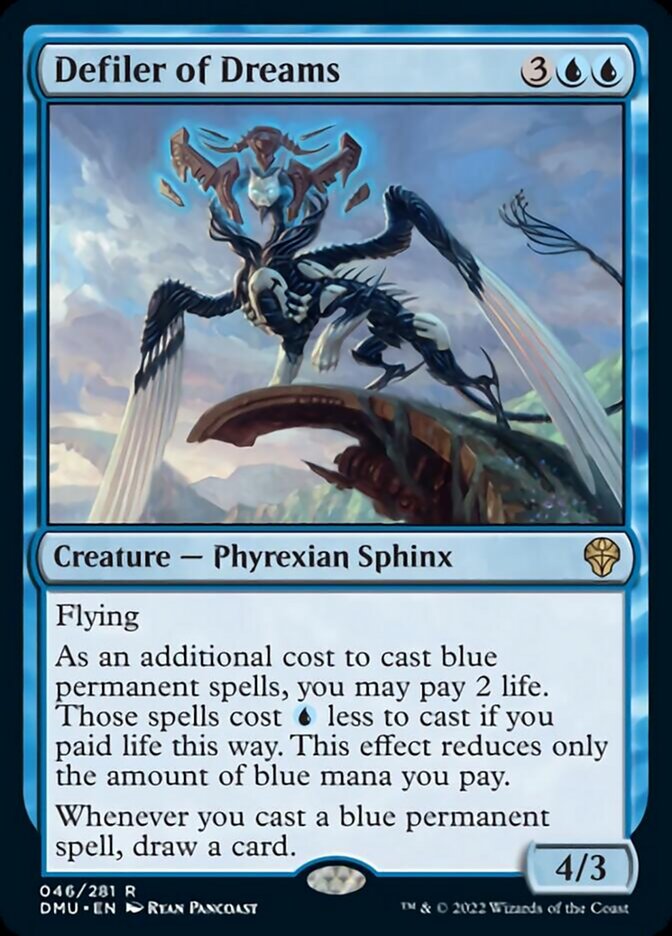
Defiler of Dreams begs to be in the same deck as Shrieking Drake. Getting mana reduction and making your creatures cantrip makes this blue creature a powerful draw engine. It feels like a secret Simic card since it wants your deck to be creature-centric, though it works with other permanent types.
#17. Goreclaw, Terror of Qal Sisma
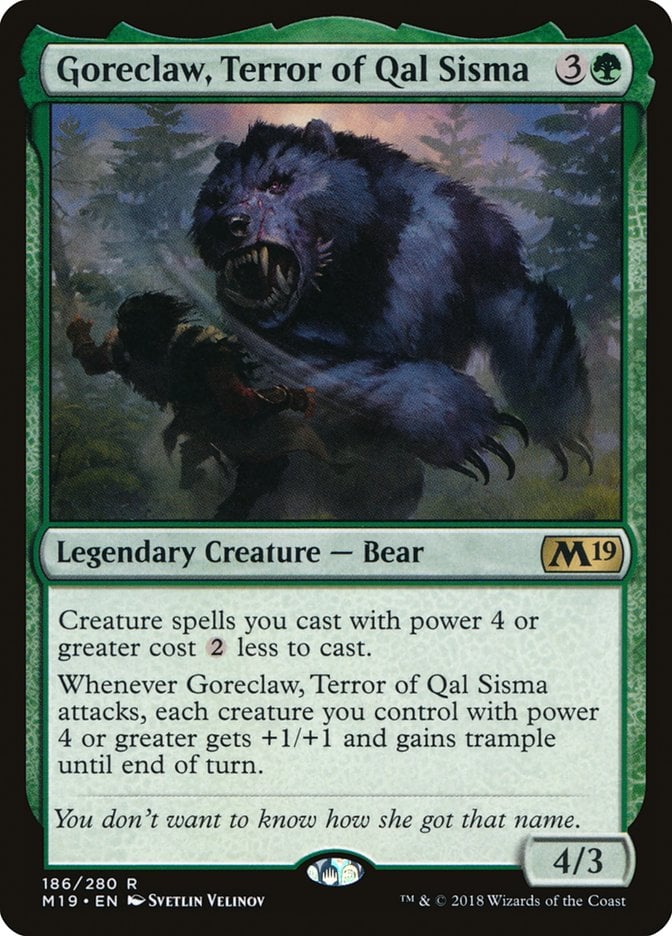
Krosan Drover wishes it could be Goreclaw, Terror of Qal Sisma. Not only do you get absurd cost reduction—especially considering how big green creatures are these days (look at the 4-mana 6/5 with upside in Colossal Rattlewurm)—but also a potent finisher effect with the attack trigger. +1/+1 isn’t a huge buff, but the creatures that Goreclaw affects are already large; the real prize is pushing combat damage via trample.
#16. Urza, Lord Protector
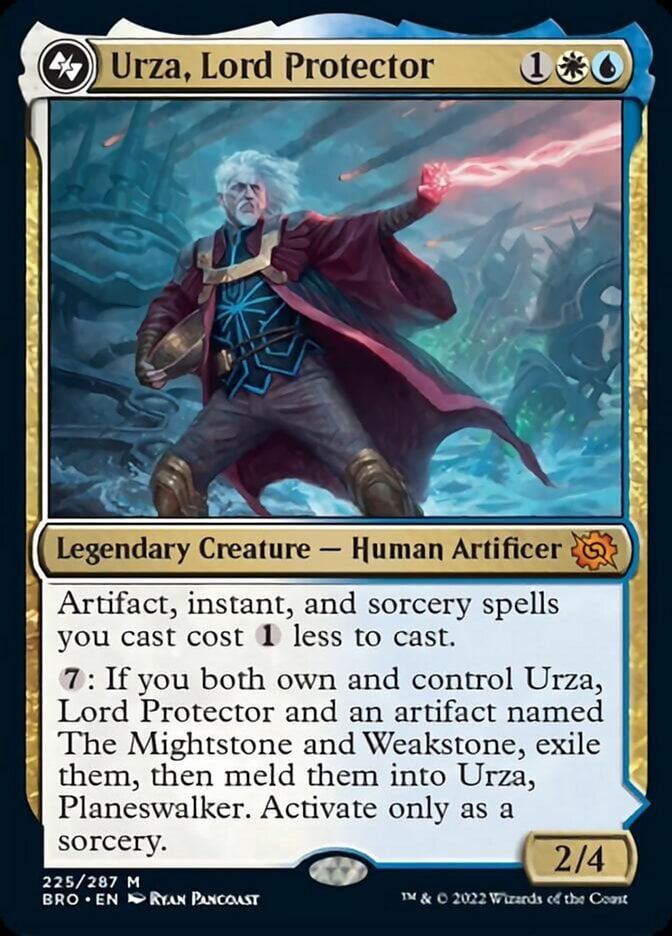
Artifacts, instants, and sorceries are the most busted card types to cheapen, so Urza, Lord Protector starts off strong. You’ll commonly see it alongside Sensei's Divining Top and some flavor of Future Sight to storm off via Aetherflux Reservoir or draw your deck, but this Azorius planeswalker can be played fairly. Kind of.
#15. Ugin, the Ineffable
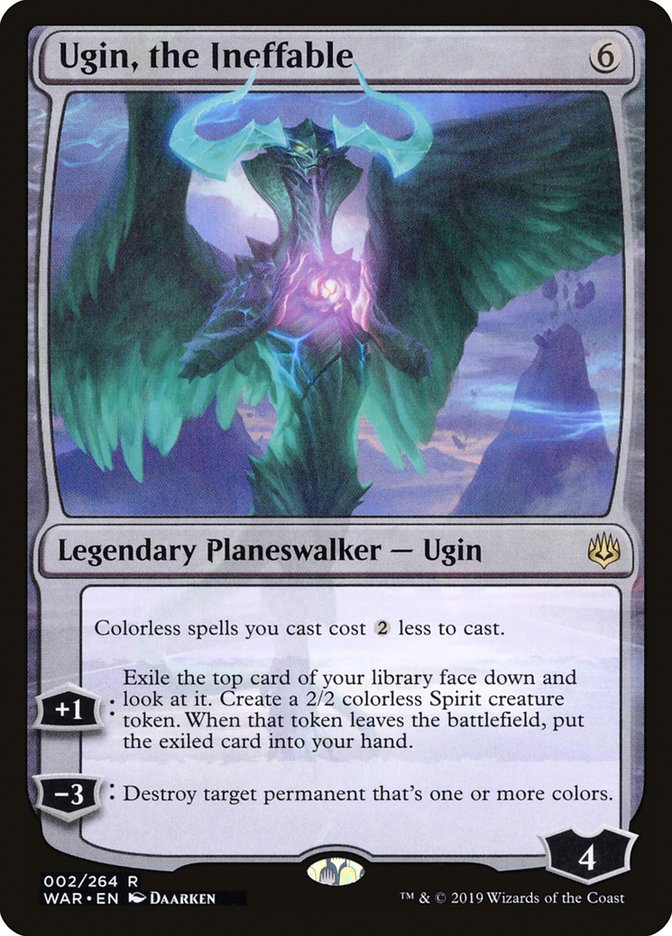
Ugin, the Ineffable making Eldrazi cheaper amuses me since Ugin canonically opposed them and sealed them on Zendikar. This is also incredible mana reduction. Artifacts might be the best card type to get cost reduction given their history of being utterly broken. Ugin’s a touch on the expensive side but comes packed with value.
#14. Defiler of Vigor
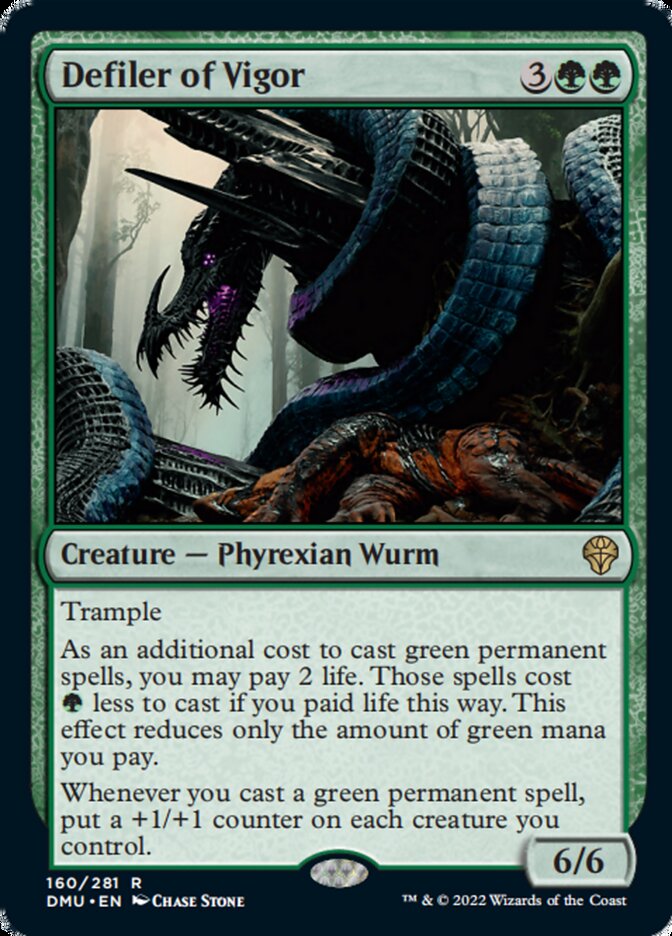
Defiler of Vigor destroys the other Defilers. It spirals out of control easily, especially once you start casting mana dorks for free. I find this green wurm pairs especially well with Beast Whisperer to churn through your deck.
#13. Urza’s Incubator
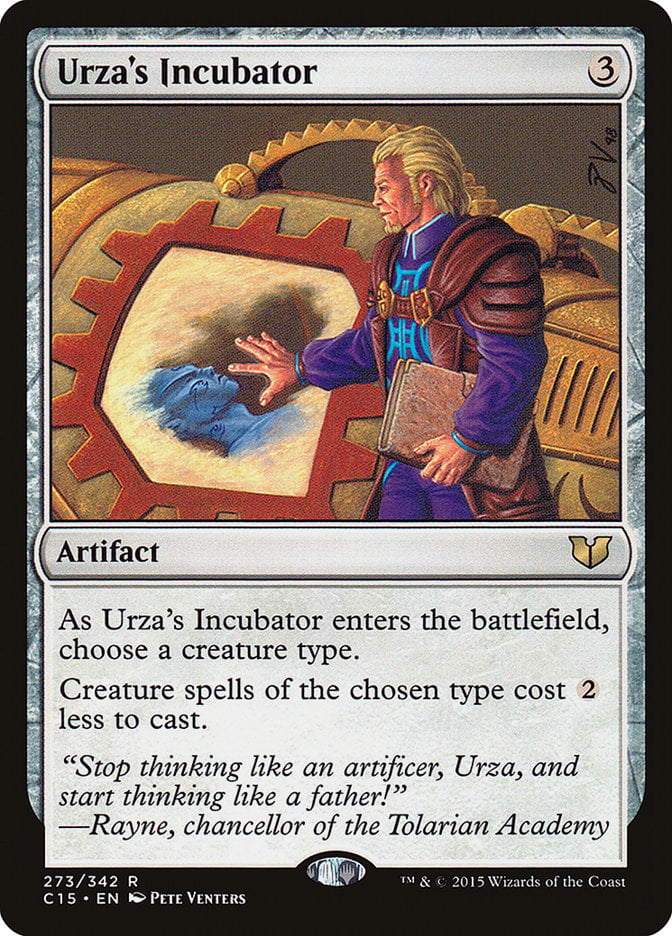
One of the most potent typal ramp cards, Urza's Incubator works best with high mana value creature types like dragons, demons, and angels. It’s far less impressive with merfolk, goblins, and other generally cheap creature types. That said, far less impressive is still pretty good, relatively speaking.
#12. Baral, Chief of Compliance + Goblin Electromancer
Baral, Chief of Compliance and Goblin Electromancer have powered Storm decks for years, often making Pyretic Ritual and Desperate Ritual do a good Dark Ritual impression. But you don’t need to be storm to leverage these staples. You just need a high concentration of instants and sorceries.
#11. Helm of Awakening
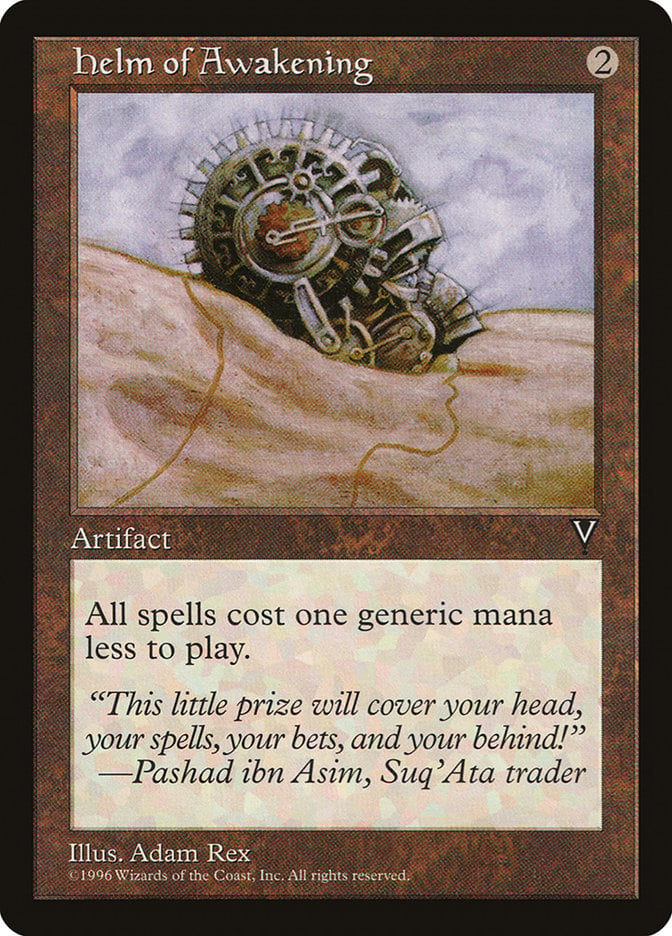
A rising tide lifts all ships. Rather than restricting what spells of yours cost less, Helm of Awakening gives everybody the discount. It’s a powerful effect if you can leverage it better than your opponents, but I’d be wary of chucking this in any old list.
#10. Herald’s Horn
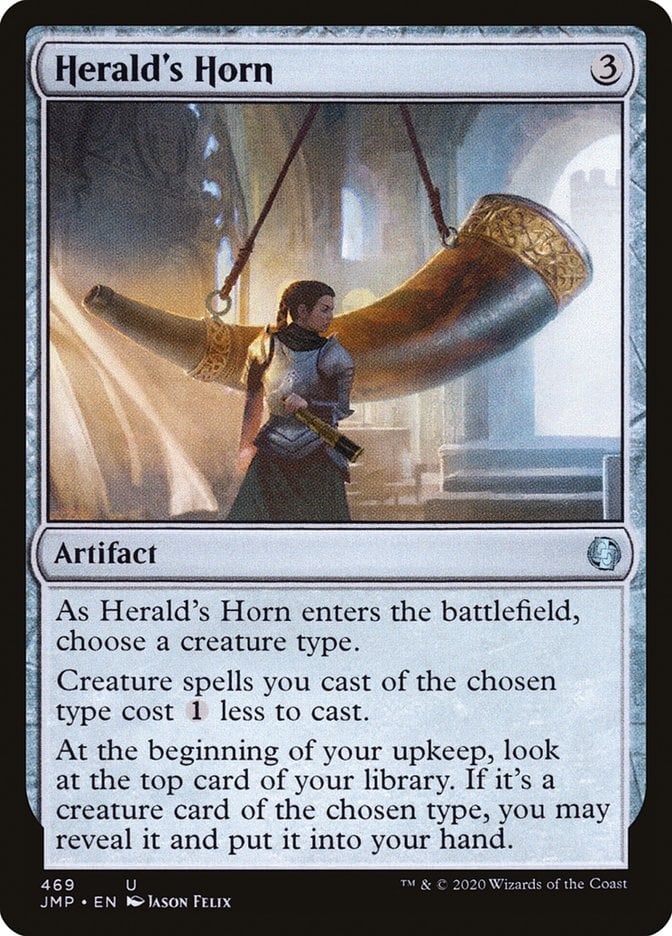
Herald's Horn doesn’t offer as steep a discount as Urza's Incubator but drawing cards more than makes up for the lost mana. One of the best artifacts for Commander, it's a must-have for any typal deck regardless of average mana values.
#9. Thunderclap Drake

Like any form of ramp, cost reducers fall off later in the game when you have plenty of mana and instead need spells. Thunderclap Drake removes this fundamental weakness with its activated ability, making it one of the most powerful cost reducers available to spellslinger decks.
#8. Etherium Sculptor + Enthusiastic Mechanaut
Artifacts might be the strongest card type to reduce the cost of. You can go infinite with Sensei's Divining Top a dozen different ways, plus cost reduction can help you play cards like Portal to Phyrexia and Cityscape Leveler well ahead of schedule. Etherium Sculptor and Enthusiastic Mechanaut are two of your best options since they’re artifacts and incredibly cheap.
#7. Doc Aurlock, Grizzled Genius
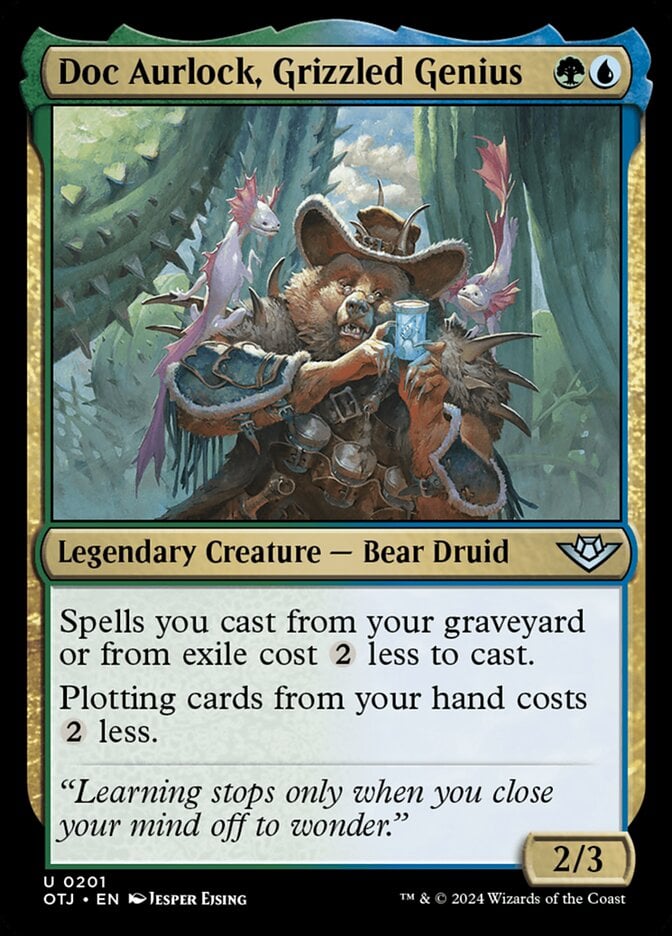
I’m coming in hot on Doc Aurlock, Grizzled Genius from Outlaws of Thunder Junction, even though the bear hasn’t been around for long. Every single Magic set fleshes out impulse draws, and casting spells from the graveyard was broken before we got a cost reducer. is a bit of an awkward color cost but plenty of 3-color decks can get around it. Put it in a Temur () list alongside the likes of Escape to the Wilds or with Sultai commanders () like Muldrotha, the Gravetide and you’ll find the good doctor doing more than 2 mana’s worth of work.
#6. Animar, Soul of Elements
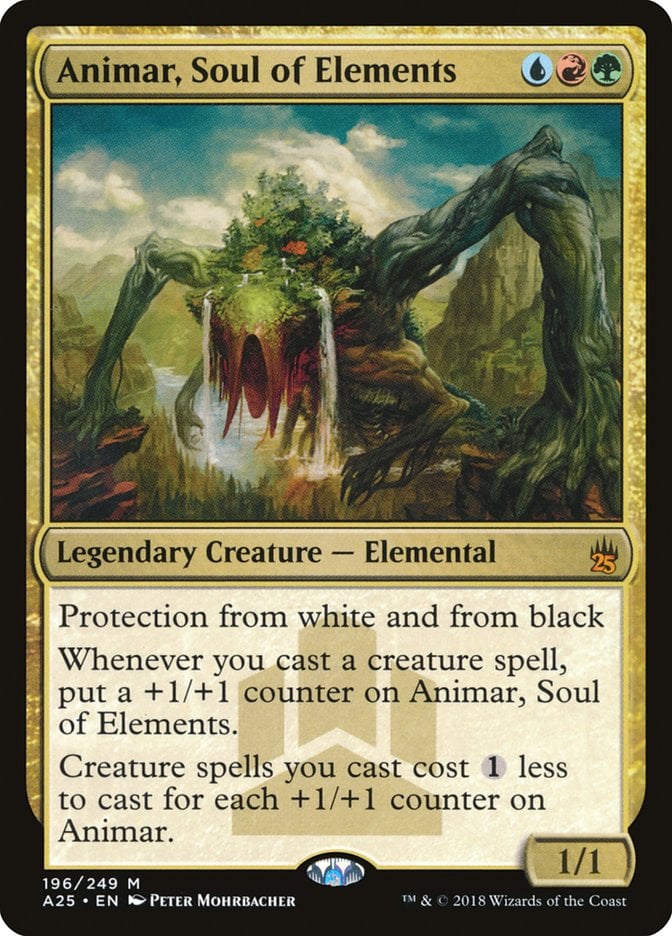
A classic morph Temur commander, Animar, Soul of Elements provides incredible cost reduction while synergizing with the well-fleshed out +1/+1 counters archetype. And it fuels itself! Forget morphs, a little work and this card lets you cast Eldrazi for free.
#5. The Ur-Dragon
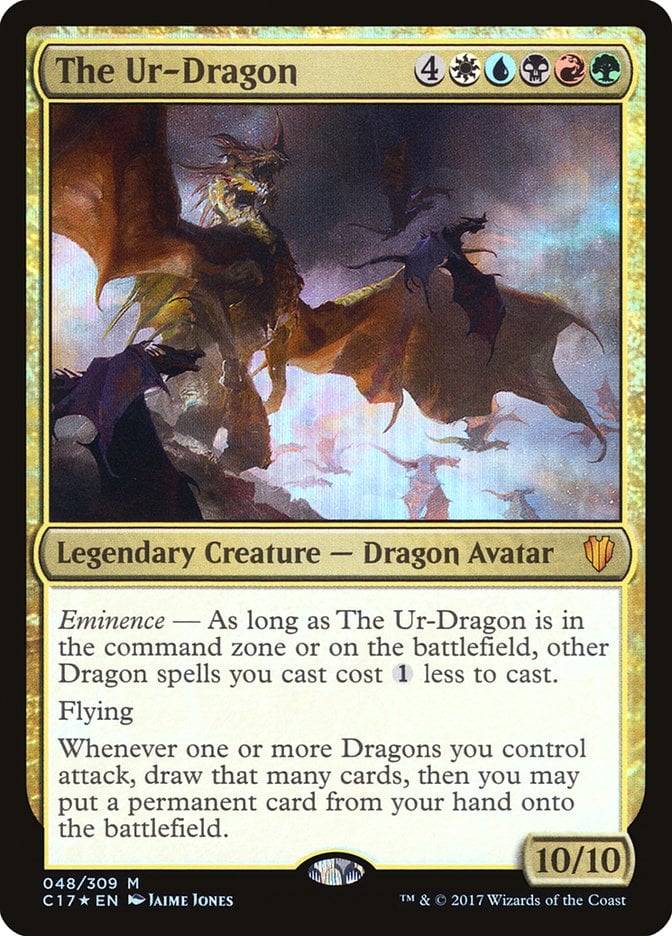
While few players put The Ur-Dragon in the command zone for its cost reduction ability, we shouldn’t overlook it. Few creature types benefit from cost reduction as much as dragons. The combination of ramp and a potent draw engine make The Ur-Dragon one of the strongest and most popular commanders.
#4. The Planeshift Familiar Cycle
The familiar cycle, printed in Planeshift, are 2-mana creatures that reduce the cost of allied color spells. While these cards play best in 3-color decks, they work in 2-color lists, offering cheap acceleration that applies to most cards in a given list.

I’m including Goblin Anarchomancer in this ranking as a similarly potent spell.
#3. Grand Arbiter Augustin IV

I don’t think I’ve ever seen a stax commander or a control commander get as much hate as Grand Arbiter Augustin IV, and I must admit it’s a formidable card. The combination of mana reduction and a tax effect puts you ahead and your opponents behind. This legend is a force to be reckoned with even outside the command zone.
#2. Rowan, Scion of War

Rowan, Scion of War is practically a combo piece. Sink a ton of life into cards like Wall of Blood and Treasonous Ogre, then fire off Crackle with Power, Torment of Hailfire, and other X spells for the win! Make sure to pack plenty of protection if you put Rowan in the command zone; this Rakdos commander is the definition of kill-on-sight.
#1. The Tempest Medallion Cycle
The Medallion cycle cards from Tempest are most often seen in mono-colored decks, but a high enough concentration of gold cards can make them worthwhile in decks with two, maybe even three colors. This is kind of the ideal cost reducer. Incredibly cheap with broad application. Sure, some lists might get away with more specific cost reduction ala artifacts or instants and sorceries, but these are the baseline against which those should be judged.
Best Cost Reducer Payoffs
While any deck can leverage the virtual mana generation of cost reducers, they tend to be best in combo-ish decks interested in firing off tons of spells. Cost reduction encourages playing bundles of spells in a manner that Storm decks in particular can use.
One of the most common combos you’ll find involves Sensei's Divining Top with a Future Sight effect, plus a card that reduces the cost of your artifacts (or colorless spells). This makes the Top free and allows you to play it from the top of your library, drawing your entire deck and generating plenty of storm to win with Aetherflux Reservoir or Tendrils of Agony.


You don’t have to play literal storm to get the benefit of casting multiple spells. Cards like Niv-Mizzet, Parun and The Howling Abomination do wonders with multiple spells cast, even if you aren’t actively a storm build.
Strategies that rely on drawing heavy amounts of cards also win from cost reduction, especially impulse draws from cards like Escape to the Wilds and Commune with Lava that allow you to draw tons of cards. More spells to cast means more virtual mana production!
Do Cost Reducers Affect Additional Costs?
Yes! Cost reduction gets applied after additional costs. Jet Medallion reduces the cost of the commander tax on your black commander and Goblin Electromancer cancels out Thalia, Guardian of Thraben.
Do Cost Reducers Stack?
They do! If you want to cast Archaeomancer with Sapphire Medallion and Sunscape Familiar in play, it costs a mere .
Wrap Up
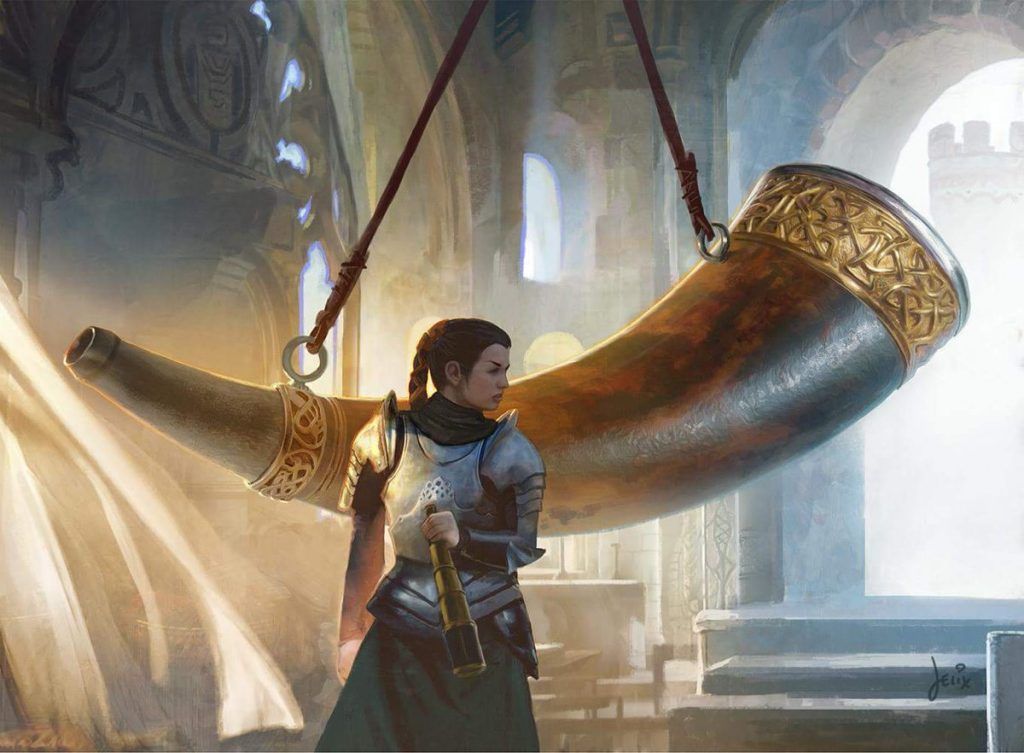
Herald's Horn | Illustration by Jason Felix
There are many ways one can ramp in a game of Magic, from dorks to auras to lands. Cost reducers have many uses, especially in decks that can draw tons of cards or combo off. They’re more restrictive than typical ramp spells but that lower floor just means they have a higher ceiling.
What’s your favorite ramp spell in Commander? Do you use cost reducers or land ramp? Let me know in the comments below or on the Draftsim Discord!
Stay safe and thanks for reading!
Follow Draftsim for awesome articles and set updates: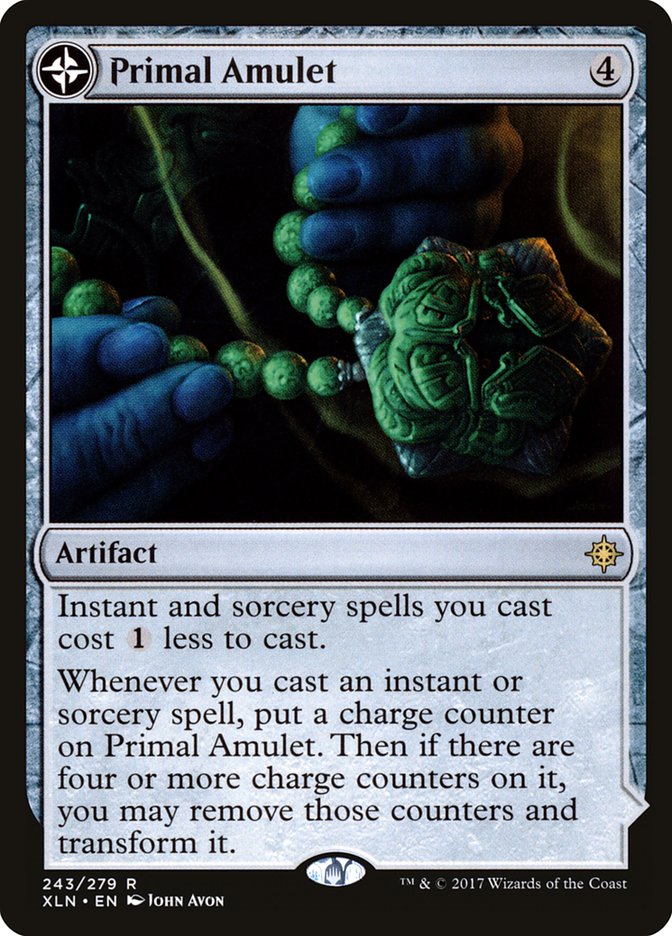


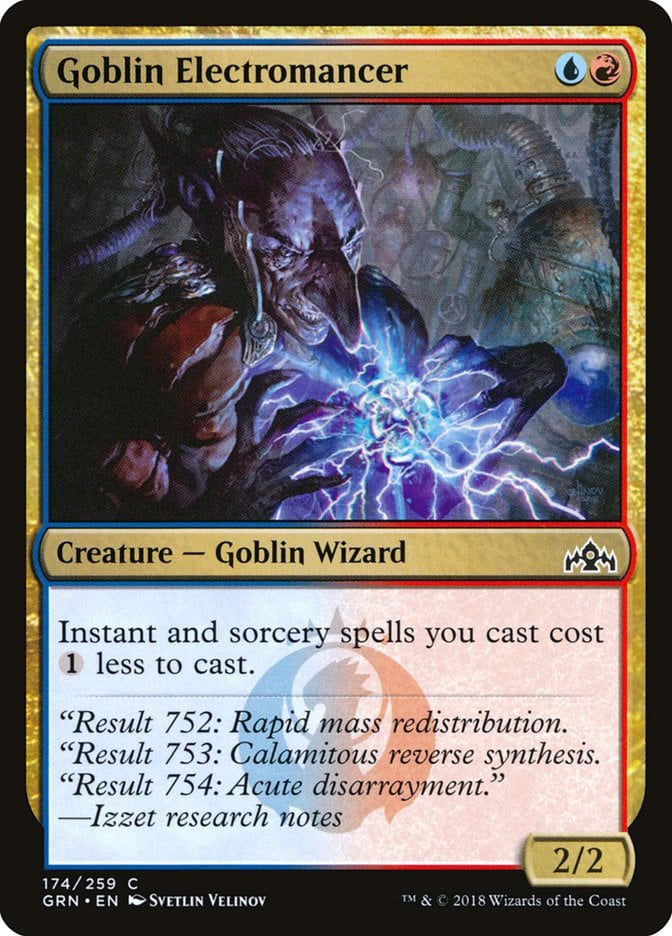
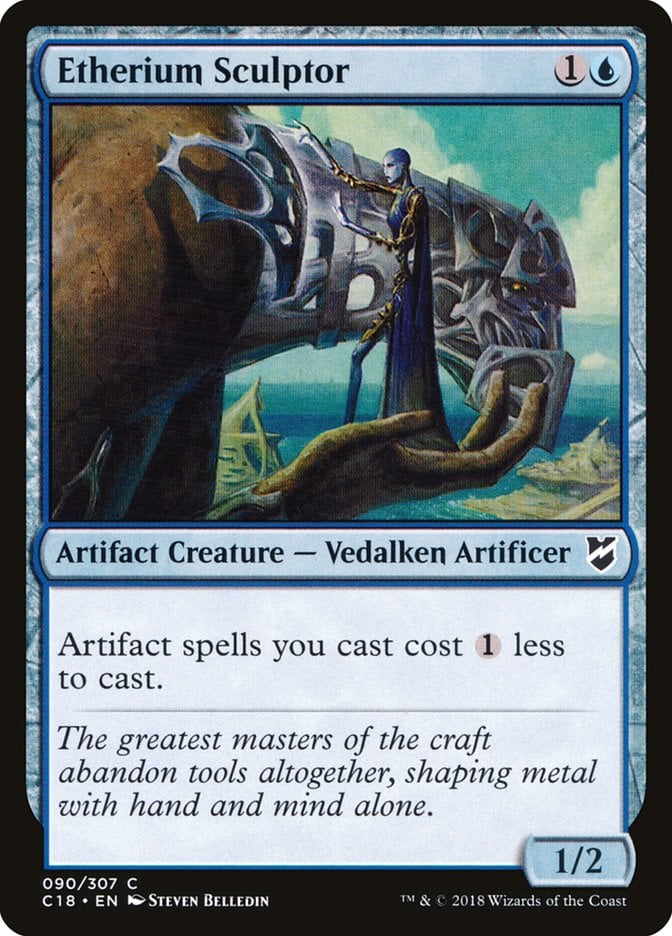

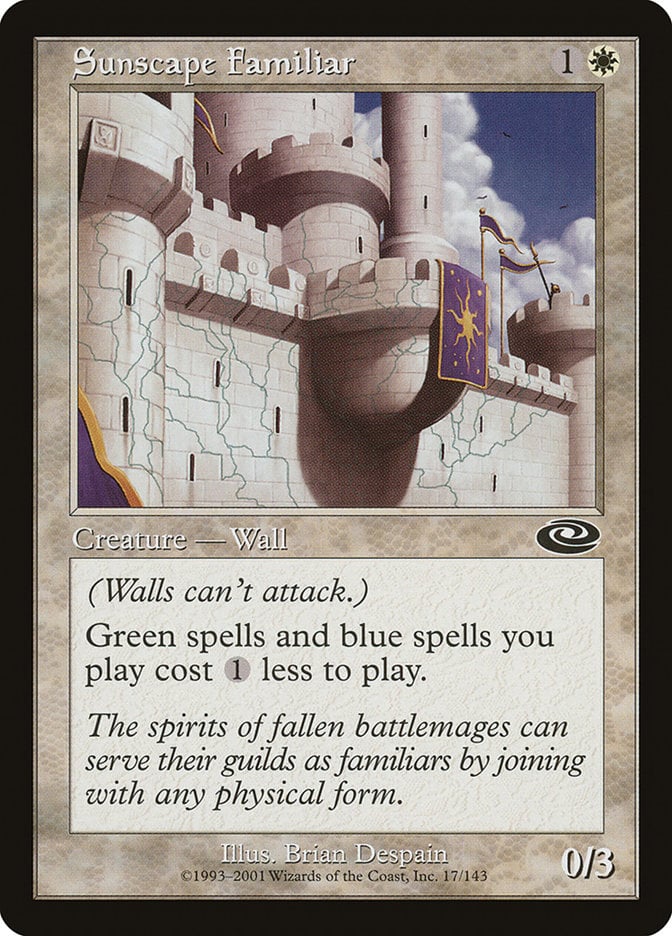

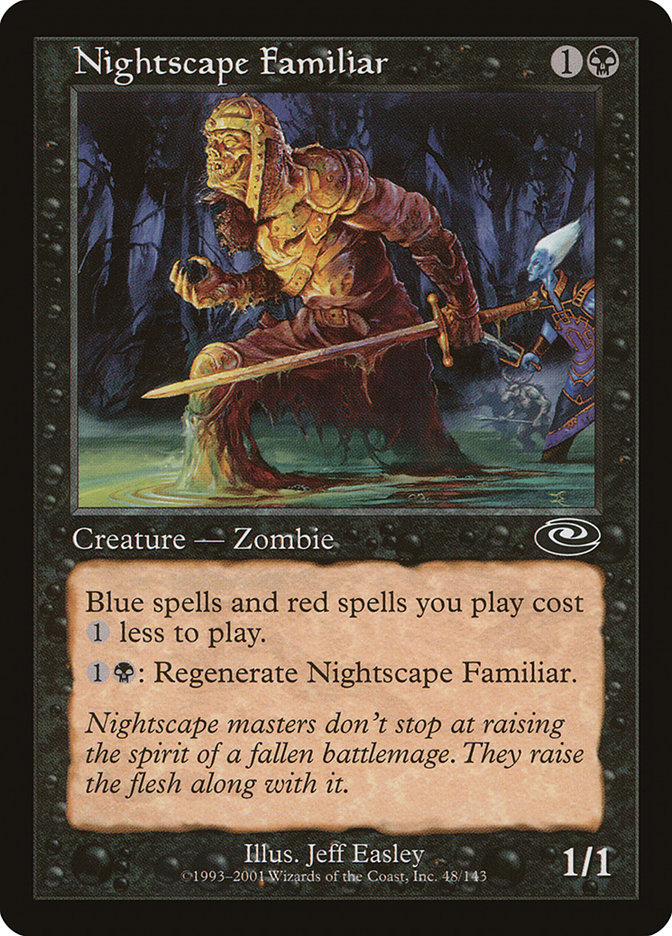
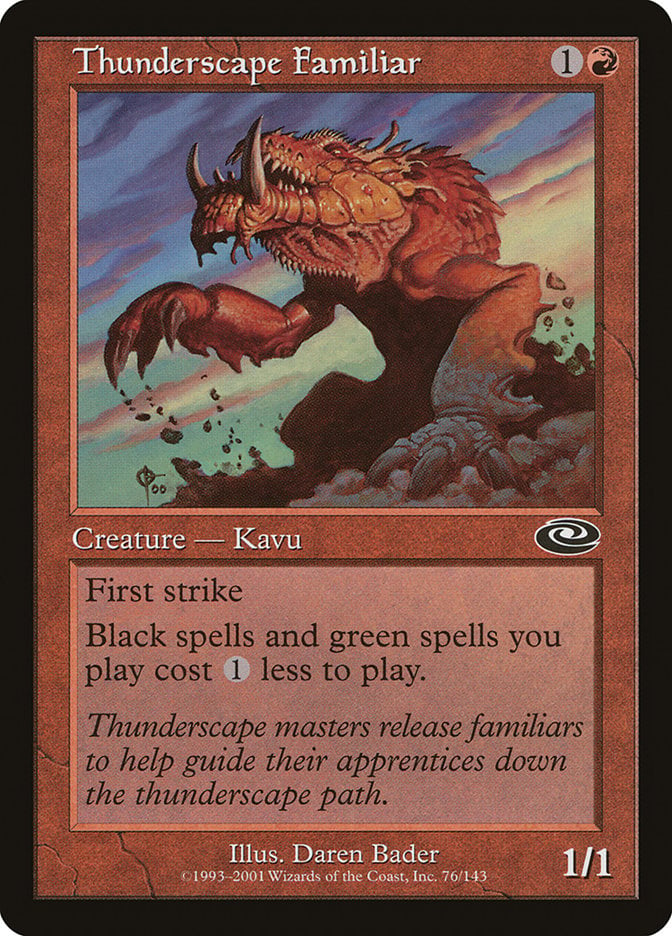
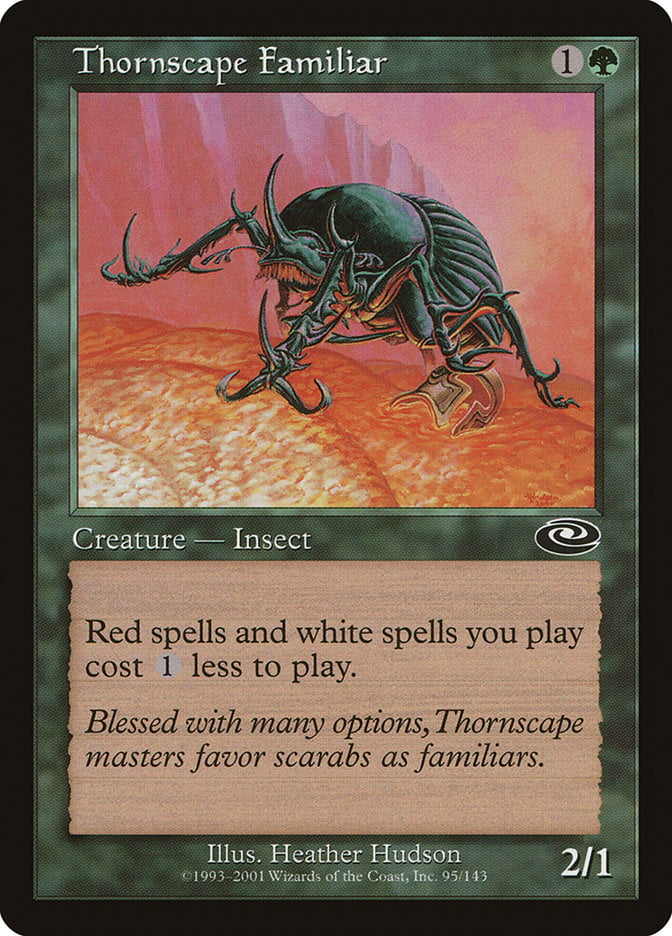





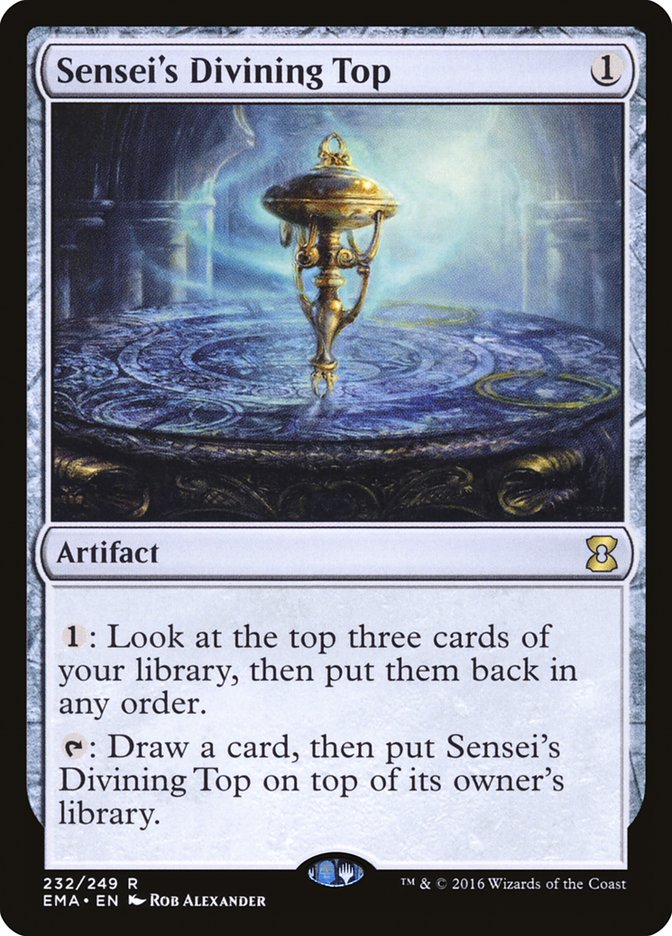
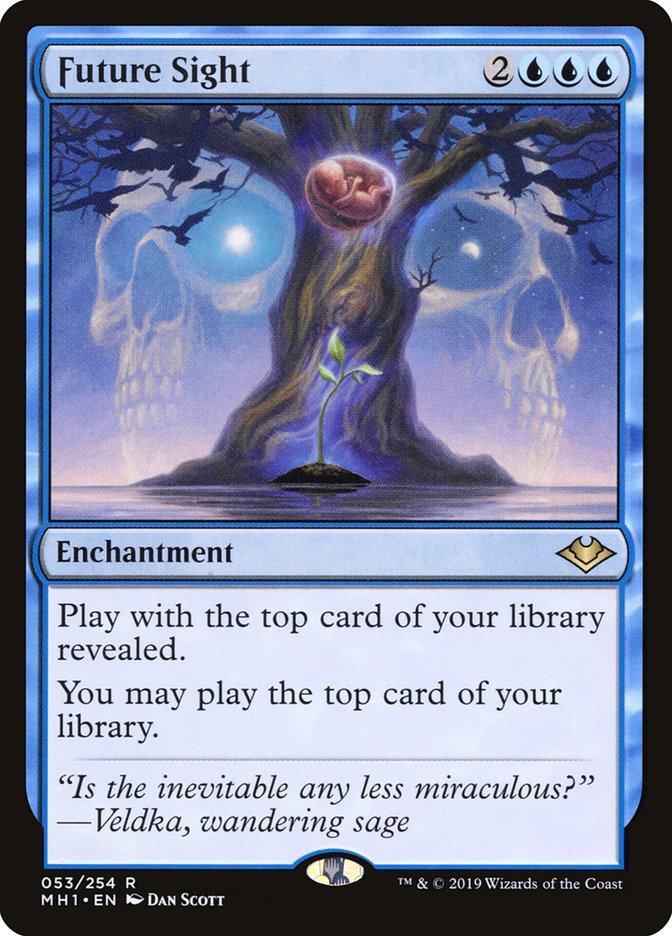
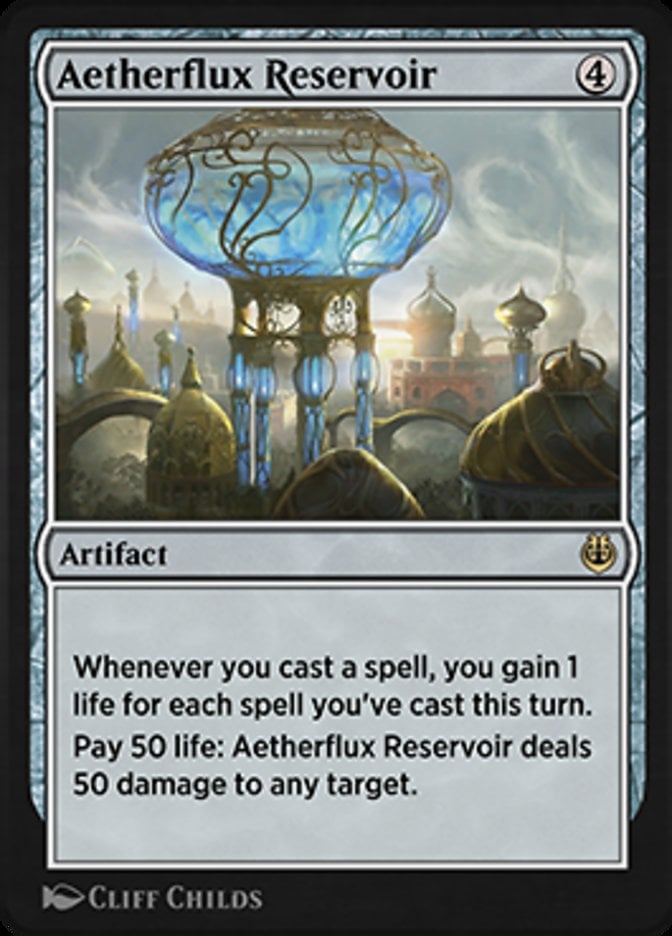
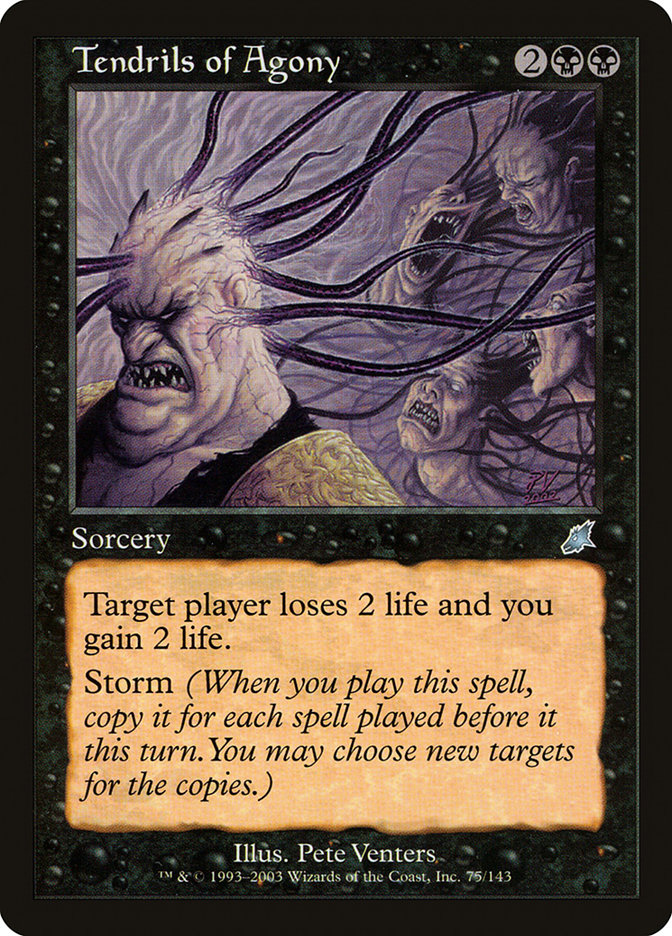
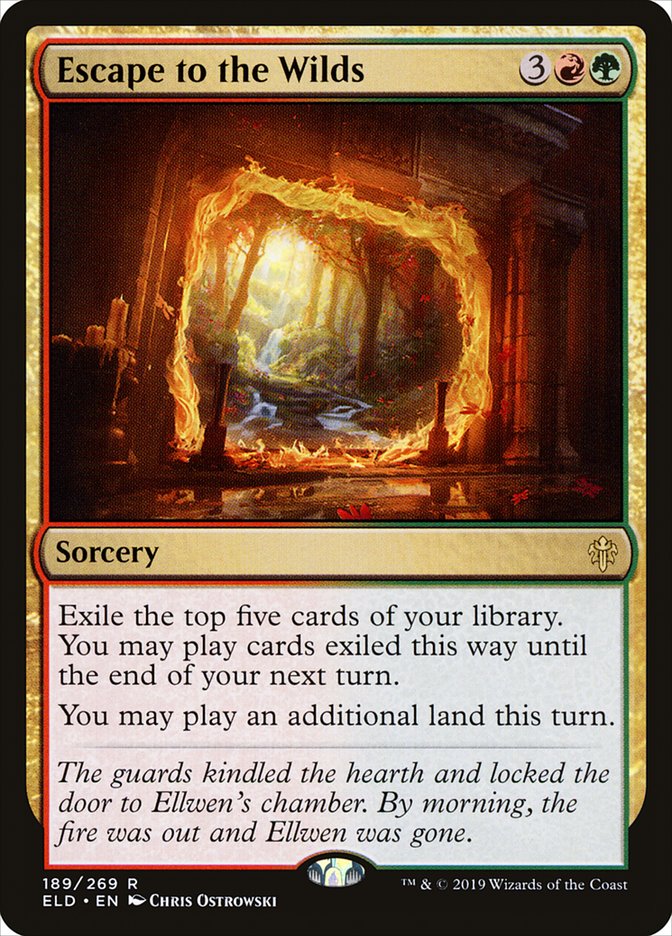



Add Comment